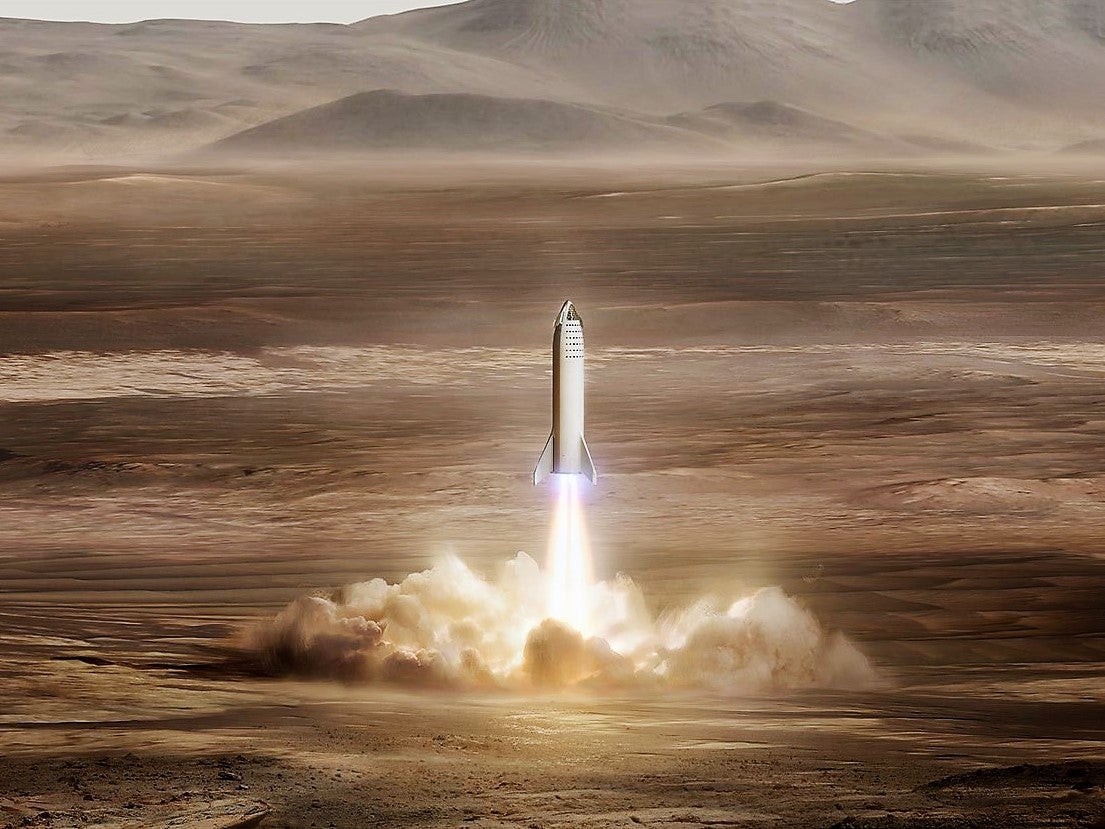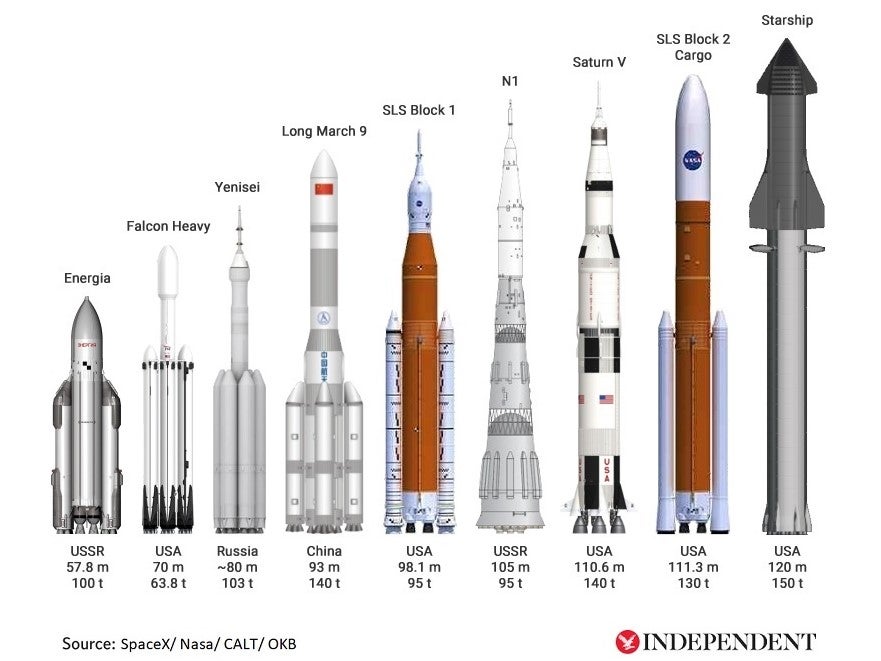Elon Musk sets date SpaceX will take humans to Mars
First orbital launch of Starship expected this month, though still no date set

SpaceX boss Elon Musk has set 2029 as the year humans will make it to Mars aboard his company’s Starship rocket.
The tech billionaire had previously hoped to make the first crewed missions to the Red Planet in either 2024 or 2026, but the development of the next-generation craft has fallen behind schedule.
Delays have included Jeff Bezos’ Blue Origin lawsuit against Nasa for awarding SpaceX a multi-billion contract to develop Starship as a lunar lander, as well as Mr Musk’s decision to reprioritise towards the Starlink space internet project in the wake of Russia’s invasion of Ukraine.
SpaceX has already achieved a number of milestones in its attempts to build a multi-planetary rocket capable of transporting people and cargo around the Solar System, most recently stacking the primary craft aboard a Super Heavy booster at the firm’s Starbase facility in Texas.
When combined with its booster, Starship will be capable of delivering up to 150 tons of payload into orbit, making it the most powerful rocket ever built.

The first ever orbital flight test for Starship is expected to take place within the next month, which will take it on a 90-minute journey from Starbase to a landing site just off the coast of Hawaii.
There have been several high-altitude flight tests of Starship, though only one of them ended with the rocket landing successfully in one piece.
The biggest obstacle is ensuring the rapid reusability of the Starship craft, which Mr Musk claims is fundamental to achieving his goal of transforming humanity into a multi-planetary species.
“If aircraft were not reusable, how much would an airline ticket cost?” Mr Musk said during a Starship event last month, during which he claimed that flights could eventually cost as little as a few million dollars, describing it as “crazy low” by current standards.
The ultimate goal is to set up a permanent colony on Mars by 2050, with Mr Musk recently suggesting that crewed missions would begin before 2030.
Responding to a question on Twitter on Wednesday evening, Mr Musk offered a more specific date of 2029.
The head of SpaceX shared an animation of what such a trip might look like last month, showing the booster delivering the main Starship craft into orbit before landing back down on Earth.
The Starship craft then docks to a refuelling station in orbit around the Earth, before continuing on its seven-month journey to Mars.
Join our commenting forum
Join thought-provoking conversations, follow other Independent readers and see their replies
Comments
Bookmark popover
Removed from bookmarks